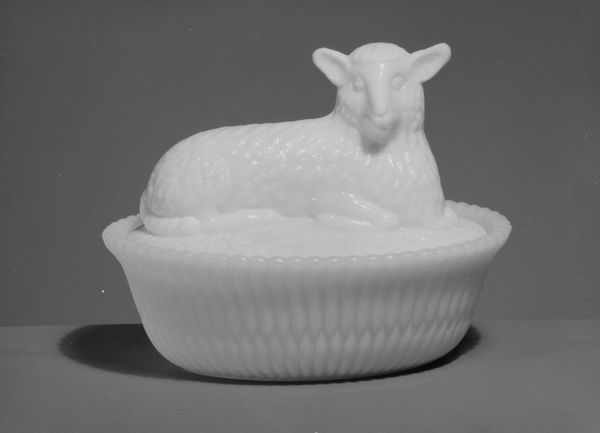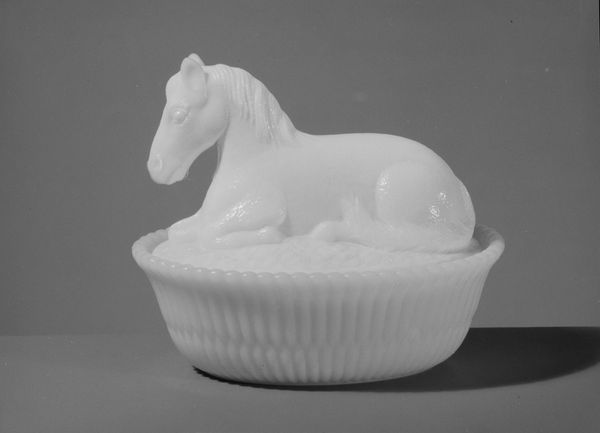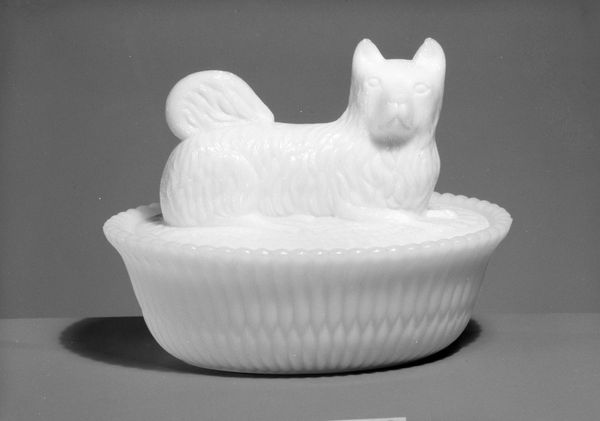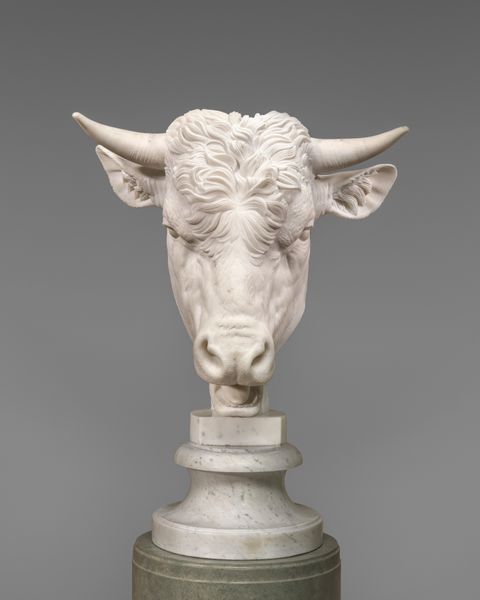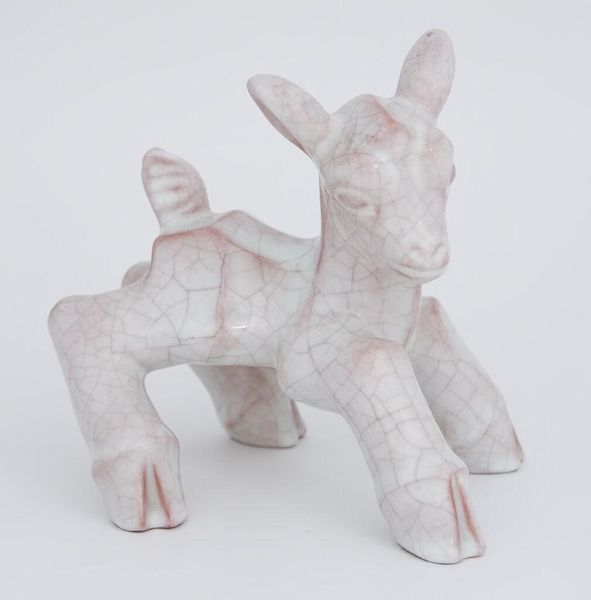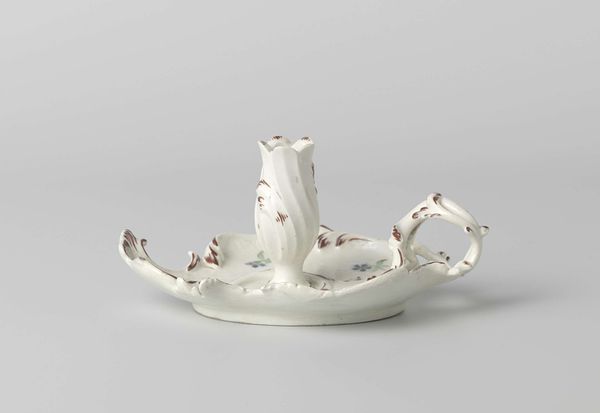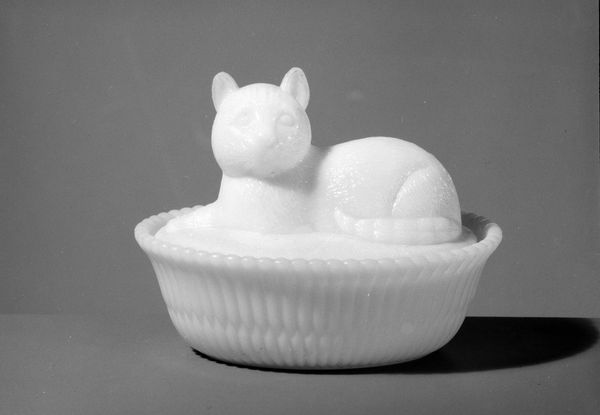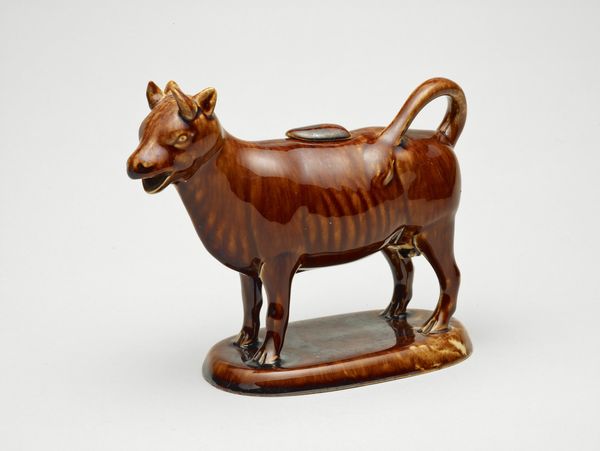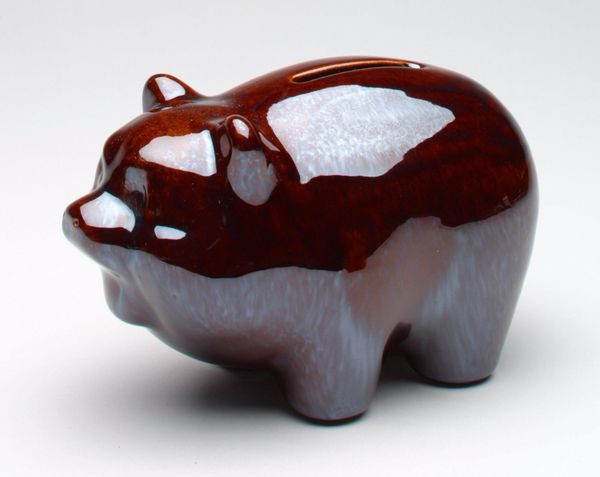
ceramic, glass
#
ceramic
#
glass
#
vessel
#
ceramic
#
decorative-art
Dimensions: 14 × 15.5 × 23.7 cm (5 1/2 × 6 1/8 × 9 3/8 in.)
Copyright: Public Domain
Curator: This is an opportunity to consider Atterbury & Company’s “Covered Dish,” a fascinating glass vessel produced around 1888, here in the Art Institute of Chicago's collection. Editor: Wow, what a curious object. Its gleaming white form and the intense red eyes are initially quite startling, almost surreal. The fluted base gives it a formality which seems at odds with the beast atop. Curator: Exactly. By employing glass and ceramic techniques for this decorative piece, Atterbury blurs the lines between artistry, manufacture, and utility. The company was known for novelty items like these. To what end, in the context of late 19th-century American consumerism? Editor: Perhaps the point is simply decorative, ornamental? But, looking closely, it seems a comment on the era's fascination with nature, but also, given the glass manufacturing context, a certain disconnect. Here we have an attempt to emulate nature through the very mechanisms that are simultaneously extracting from and disrupting it. Curator: Good point, yes. And beyond those issues of land use, consider labor conditions. Factory life certainly separated those who created beautiful wares such as this from the experience of genteel living, even though the objects may have suggested aspirations for those modes. We also need to remember it may have had roots in the cultural traditions carried by immigrants working in the factory system. Editor: Right, the story is in the materials. We also must not forget the commodification inherent in decorative arts during this period; these objects, initially expressions of artistry or attempts at personal or group representation, became just another item within the growing markets of the Gilded Age. And look how smoothly it all works to disguise the fact that at the end of the day this beautiful, odd object is a storage container. Curator: Well, the fact it contains IS rather profound, really. Considering women were so tied to managing the home, could this beautiful oddity act as a statement about the constraints upon women’s work in domestic life? The piece speaks, too, to gendered labor and the way beauty could mask hidden power dynamics. Editor: Fascinating insights. Reflecting upon "Covered Dish," I think I see how material culture is deeply implicated in questions of both gender, and also environmental anxiety, in its late 19th century social context. Curator: Indeed. A deceptively complex object that prompts a host of larger social considerations.
Comments
No comments
Be the first to comment and join the conversation on the ultimate creative platform.

